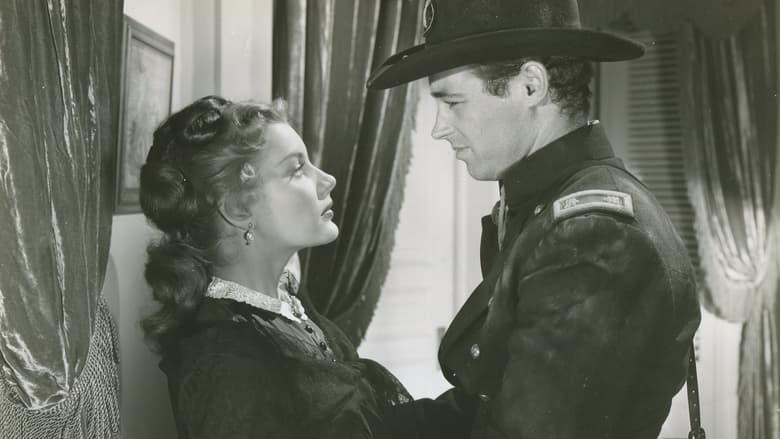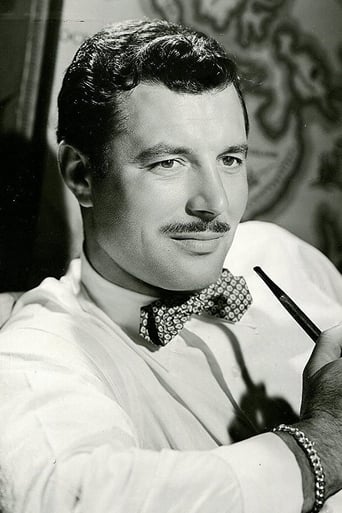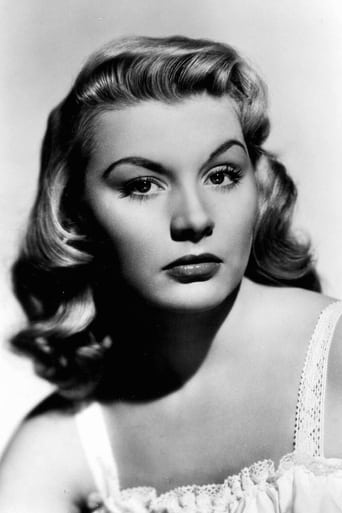Drums in the Deep South (1951)
Two old friends find themselves on opposite sides during the Civil War in a desperate battle atop an impregnable mountain.
Watch Trailer
Cast


Reviews
Save your money for something good and enjoyable
Although it has its amusing moments, in eneral the plot does not convince.
It's a movie as timely as it is provocative and amazingly, for much of its running time, it is weirdly funny.
It is an exhilarating, distressing, funny and profound film, with one of the more memorable film scores in years,
Directed by William Cameron Menzies & based on a story by Civil War author Hollister Noble, this movie has nothing to do with drums. Not even, one scene with drum boy. Instead, the movie tells the story of a small group of Confederate soldiers leaded by Maj. Clay Clayburn (James Craig) trying to mount, cannons onto a mountain, before a Union railroad convey comes to help burn the city of Atlanta, down. Without spoiling the movie, too much, I have to say, the original titled of this film, 'The Confederate Story' suite it better. However, it's hard to root for these protagonists. Not only, are they fighting for the wrong side, and clearly, had slaves on their cotton farm; but they're kinda self-centered jerks trying to commit adultery while the husband is fighting armies in Atlanta. They also seem to have a problem with caring for others. People die around them, and they barely show any reaction to their deaths. A good example of this, is the whole letter scene and a soldier falling down the cave. It seem like those scenes had didn't hold any water or weight to the characters. Another thing, so jarring about this movie, is how similar, the main characters are, to 1939's film, 'Gone with the Wind'. You really do see it, within the actor's performances. First off, James Craig is really trying too hard to evoke, Clark Gable in this film. While, he had success with his scenes of bravery to fight the war; sadly, he fails miserable as romantic lead, because he has little of Gable's well-crafted charm to back it up. Because of that lacking factor, you really don't feel any chemistry between him and Kathy Summer (Barbara Payton) at all. Then, there is Barbara Payton, whom comes off, as just depressing, stubborn, and evil looking. I was really hoping for a more heart-warming performance from her. It also sad to hear that at the time of the filming, Barbara has really sank deep into the bottle. You can really sense it, here with her, somewhat unemotional delivery and her bloated, blotchy appearance. Her eventual battles with alcohol and drug addiction, cost her everything. On May 8, 1967, the 39-year-old former starlet was found on the bathroom floor - dead from heart and liver failure. Despite the lack of mostly good acting in this. I found one actor to really shine, through this, and that was Guy Madison as Union Maj. Will Denning. You really feel the inner conflict, going through him. You see this man, sweat with every decision, he has to make. All, he wants to do is serve his country, but his friends happen to be for the other side. However, the DVD cover of this movie is a bit misleading. First off, Guy Madison is not the main lead in this film, he's more like a supporting character, and second off; his character doesn't arrive at the battle site, until the end of the 3rd act. I guess, the now new producers of this film, really wanted to target modern audiences, by making it seem that the movie is about Union forces, when it's not. I guess, it would make the film seem, better to sell to a general audience. It might seem like a smart marketing move to some, but for me. It's very sham-full deception. Since, the original producers, King Brothers Productions & RKO Pictures fail to renew the film's copyright. It resulted, with the film, falling into public domain, meaning that virtually anyone could duplicate and sell a VHS/DVD copy of 'Drums of the Deep South'. Therefore, many of the versions of this film available on the market are either severely or badly edited. Since many of them, come from extremely poor quality, having been duped from second- or third-generation copies. Don't count on the audio and film footage to be good. My copy had awful loud echoing, static, and missing dialogue pauses. Not only that, but it had a lot of scratches, and discoloring in the film footage. Despite that, you can still, mostly see the wonderful recycle production design that William Cameron Menzies, use for this film, as well as producer, David O' Selznick's 1938's 'The Adventures of Tom Sawyer' & 'Gone with the Wind", here. Another thing that William Cameron Menzies did well, and pioneered, was the use of color in film for dramatic effect. You really do see it, here, in the models based on real-life, Wyoming location, 'Devil's Tower'. It was amazing. It's pretty obvious that director Steven Spielberg saw this movie and was "inspired" to use the Devil's Tower as a setting for 1977's 'Close Encounter of the Third Kind'. The mixer of real-life train scenes with model train explosions, was also well shot, well-edited, and well-made. The action scenes in the cave were also very intense to watch. The score by composer Dimitri Tiomkin, really provides the right amount of sound to the many battle or suspense scenes. However, I wish the movie was little more historic accuracy. A lot of their informative about how cannon fire, works, was a bit misleading. It doesn't help the fact that the author of the source material, was making things up as he goes, like when he said that Union General Sherman was having train being sent to him. In actual history General Sherman's troops advanced without a supply line and lived off the land until they conquered Atlanta, then continued to Charleston, South Carolina. This victory helped to reelect Lincoln and pretty much, help save the Union. So, to hear otherwise, it made for a very awkward watch. Overall: I have to say, this movie was mostly fine. Good, but nothing too memorable. An old gem, worthy of rewatching, despite some flaws. Check it out, if you're a huge Civil War fan.
During the US Civil War, Confederate Major James Craig (as Clay Clayburn) finds himself fighting Union Major Guy Madison (as Will Denning). As is the case in most Civil War stories, the opposing soldiers once had a close relationship; in this case, they were West Point buddies. Mr. Craig is also in love with a beautiful woman, Barbara Payton (as Kathy Summers). This is a fairly predictable Civil War story. The dramatics are enhanced by Ms. Payton in the feminine lead. Payton is the most interesting player in the middling "Drums in the Deep South"; with a better part, and direction, Payton might have been a much bigger star. Her biography is sad, and typical. **** Drums in the Deep South (9/51) William Cameron Menzies ~ James Craig, Barbara Payton, Guy Madison
Although he designed and directed a number of notable films, today William Cameron Menzies is best recalled as the director of the "so bad it's good" 1953 INVADERS FROM MARS. His work with the 1951 DRUMS IN THE DEEP SOUTH might be considered a build up to that ham-fisted style, for it has the same flatness. Sad to say, it has none of the same fun.The story concerns a Confederate effort to thwart Sherman's advance on Atlanta. Strange to say, however, Georgia seems to have been transplanted to the wild west for purposes of the film, which comes complete with a mesa on which the Confederates desire to plant their cannon and fire upon the railroad below. Throw in a love triangle and some of the most uninspired acting you can obtain and you have DRUMS IN THE DEEP SOUTH.Today the film is best recalled for the presence of actress Barbara Payton (1927-1967), a performer who trembled on the brink of stardom in the late 1940s and early 1950s before she self-destructed in a hog-wallow of sex, booze, drugs, and front page scandal. It is easy to see what the fuss was about: she has a dead-pan sexuality, larger-than-life beauty, and memorable speaking voice. Unfortunately, none of these qualities have much to do with either film or role, and even her cult-status can't make up for what is basically a remarkably shallow, incredibly silly, and deadly dull film.Unless you are desperate to see what Payton looked like on the screen before she ended up as a five dollar hooker working the Sunset Strip, DRUMS ALONG THE DEEP SOUTH is a film to avoid at all costs. Treat it as you would the plague.Gary F. Taylor, aka GFT, Amazon Reviewer
William Cameron Menzies is perhaps the best production designer in American motion picture history (Gone With the Wind, et alia) and his work as director applies the design principles which he espoused, such as with this film, including a prime emphasis upon cinema as a graphic art, a visual rather than literal interpretation of a script, filling that metaphysical space between scenario and direction with an artist's point of view, while avoiding a potentially incorrect objective sensibility. The narrative tells of a pair of best friends and West Point classmates, Georgian Clay Clayburn (James Craig) and Yankee Will Denning (Guy Madison) who are wearing officers' coats of opposing artillery units during the War Between The States, and of the inevitable military engagement between them, featuring a most dramatic segment involving the difficult placement of Confederate cannons atop a mountain overlooking Union rail supply lines, shot with Menzies' intriguing pictorial effects and unique camera angles. An independent King Brothers production under the aegis of RKO, DRUMS IN THE DEEP SOUTH is not replete with good performances, although Craig is solid as is his custom, while Barbara Payton, as Clayburn's lover, tries hard and is at the pinnacle of her short-lived beauty, with Dimitri Tiomkin's lush score properly evocative for this generally prescriptive film.










